Franck Muller Aeternitas 3 Tourbillon Power Reserve Chronograph Watch
Franck Muller Aeternitas 3 Power Reserve Chronograph watch, stainless steel case (measures 46 x 39mm) with see-through caseback, alligator leather... more>>
Rating: 2/5
based on 10 reviews
Base price with tax: $646,760
Sales Price: $351,500
Discount: $295,260
Sales Price: $351,500
Discount: $295,260
- Price
- Description
- Comments and Reviews
| Sellers | Base Price | Buy Now |
|---|---|---|
| TheFinestWatches.com | $351,500 |
Franck Muller Aeternitas 3 Power Reserve Chronograph watch, stainless steel case (measures 46 x 39mm) with see-through caseback, alligator leather strap, silver-white dial with black Arabic numerals, open tourbillon escapement at 6 o'clock, power reserve indicator at 12 o'clock, split-second chronograph functions, self-winding mechanical movement, scratch-resistant sapphire crystal, water-resistant to 30 meters.The House of Franck Muller is internationally recognized for the boldness of its creations. This year, it dedicates the Aeternitas wrist-watch to enthusiasts of complicated movements.For the time being, Aeternitas is presented in four versions sharing a common basic movement. A Cintre Curvex shaped automatic movement with a micro-rotor placed at 6 o'clock and visible through the open-back with the following dimensions:3-9 o'clock: 33.8 mm12-6 o'clock: 40.8 mmwidth: 7.3 mmThe movement is equipped with a double barrel which guarantees a power reserve of about 8 days. It has a grand tourbillon (14mm) with a balance-wheel with adjustment screws in platinum and no index. In terms of design, the engineers of the House of Franck Muller have designed the FM initials on the upper bridge of the tourbillon in a very refined style. The tourbillon stands over the rotor, which is visible through the open-back. An eternal calendar module (placed on the dial side) is added to the basic movement in the second version. This is a world first.A perpetual calendar indicates the day, the date, the month and the moon phases. It takes into account the length of each month and doesn't require any manual intervention. This mechanism also takes into account the leap years, but it needs to be adjusted three times in a row every 100 years. According to the Gregorian calendar, every 400 years, the leap year is cancelled for three centuries in a row and is re-established on the fourth century. For instance, in 2100, 2200, 2300 and so on, the leap year is omitted whereas in 2000, 2400, 2800 and so on, it is re-established.The eternal calendar of the Franck Muller Watchland workshops is different from any traditional perpetual calendar in that it takes into account the rule governing the Gregorian calendar stating that all century years not divisible by 400 are common years and not leap years. The eternal calendar follows a cycle of 1,000 years thanks to two additional sets of wheels:The first set of wheels, comprising a wheel of 10 years, a wheel of 100 years and a wheel of 1,000 years, allows for the display of a cycle of 1,000 years. The second set of wheels was designed for the setting, through the use of cams, of the skipping of the leap years three times in a row every 100 years and its re-establishment the fourth time. On top of the usual indications ? retrograde date at 12 o'clock, days, months, 24h day and night, normal leap year cycle ? it also indicates the time equation. The equation of time is coupled with the calendar, which means that even when the watch is not wound for many years, at the moment of its correction, the equation of time follows the calendar.On the lower side of the dial, two time zones with a 24 hour hand are placed on the left and on the right hand side of the tourbillon. It is possible to set the hour by pressing the push-pieces on the case. The push-piece on the lower right hand side sets the time zone placed on the right hand side of the tourbillon. As it was conceived for traveling eastwards, at each pressure the hand moves one hour ahead. The push-piece on the lower left hand side corresponds to the time zone placed on the left hand side of the tourbillon. As it was thought for traveling westwards, at each pressure the hand moves back one hour. Between the tourbillon and the center of the dial, the years from 0 to 999 are displayed in an aperture and the cycle can go on indefinitely.On the dial, the moon phases are displayed with the utmost precision. The mistake is of only 6.8 seconds per lunar month which represents a mistake of only one day every 1000 years, whereas in a traditional system the mistake is of one day every four years.This version incorporates a Split-seconds Chronograph in the movement beside the tourbillon. This mechanism has three column-wheels, an instantaneous 30 minutes counter; a 12 hours counter placed in a 120&#deg; sector at 12 o'clock and indicated by a hand. If the chronograph hand moves for over 12 hours, at the end of the cycle it goes back to 0 and begins a new cycle. Contrary to a traditional chronograph, the mechanism of the hour counter is visible through the open-back. There is also an additional 24h time zone at 9 o'clock.
Copyright © 2025 Watches. All Right Reserved.

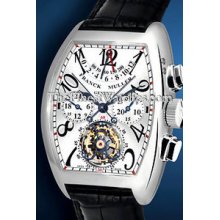
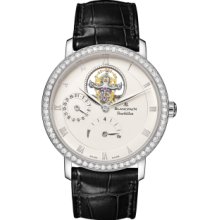
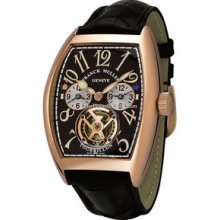
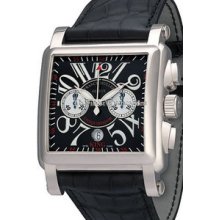
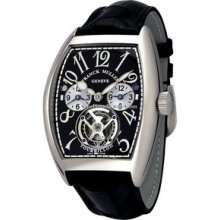
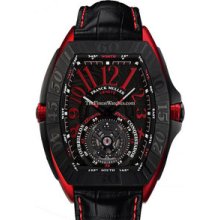
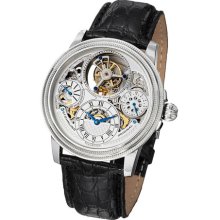
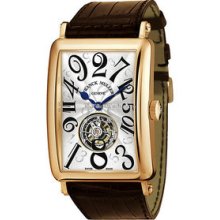
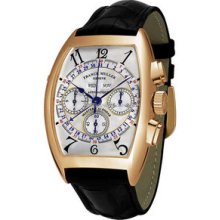
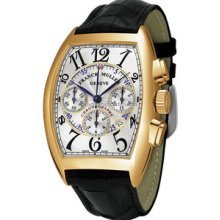
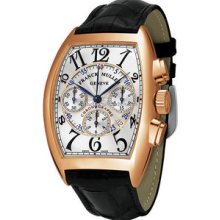
Comments
Add Comment